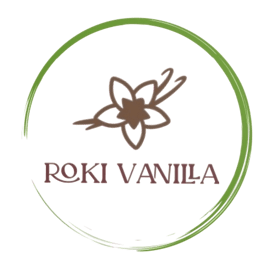The Rich History of Vanilla Beans Farming in Uganda
2 min read


Introduction to Vanilla Bean Farming in Uganda
Vanilla bean farming has a storied past in Uganda, where the tropical climate offers optimal conditions for cultivating this cherished spice. Known as a significant exporter of high-quality vanilla, Uganda has become synonymous with the production of some of the world's finest vanilla beans. This blog post delves into the intriguing history of vanilla bean farming in Uganda, tracing its roots and the evolution of the industry over the years.
The Origins of Vanilla Cultivation in Uganda
Vanilla is native to Central America, but its introduction to Uganda can be traced back to the colonial era. European settlers saw the potential for growing vanilla in Uganda’s fertile soils and introduced the plant in the late 19th century. The unique climatic conditions in the country, characterized by rich volcanic soils and ample rainfall, provided an ideal environment for vanilla cultivation. As the years went by, local farmers started to adopt vanilla cultivation techniques, establishing Uganda as a notable participant in the global vanilla market.
The Impact of Vanilla Farming on Local Communities
Vanilla bean farming has had a substantial impact on the livelihoods of many Ugandan families. By sustainably cultivating this high-demand crop, local farmers have been able to improve their economic status and access education and healthcare for their families. The process of harvesting vanilla beans is labor-intensive, requiring careful pollination, harvesting, and subsequent curing methods to develop the beans' complex flavor profile. This careful craftsmanship has allowed Uganda to maintain high standards in vanilla production, strengthening its reputation and exporting capabilities.
Challenges and Future Prospects
Despite the successes of vanilla farming in Uganda, the industry faces several challenges, including climate change, pests, and market fluctuations. As global demand for natural vanilla rises, farmers are confronted with the intricacies of meeting quality expectations while managing costs. In response, various organizations are working alongside Ugandan farmers to implement sustainable practices and support infrastructure development. The future of vanilla bean farming in Uganda looks optimistic, provided these challenges are effectively tackled.
Conclusion
In conclusion, the history of vanilla bean farming in Uganda is a testament to the country’s agricultural potential and the resilience of its farmers. As Uganda continues to carve its niche in the global vanilla market, the rich heritage of this crop serves as both a reminder and an inspiration for future generations of Ugandan farmers. By focusing on sustainable practices and fostering a deeper understanding of market needs, Uganda can ensure the ongoing success of its vanilla farming industry.
High Quality | Fair price
Premium organic uganda vanilla beans export.
Follow / Contact us on our social medias
Contact
Request
info@rokivanilla.com
+256 769584969
© 2025. All rights reserved.


